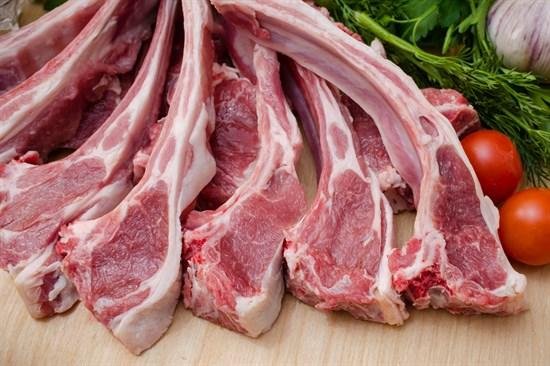Sustainability is important for many industries, including farming. In the Bay Area, lamb farmers use eco-friendly practices to care for the environment and their animals. These methods help reduce waste, protect natural resources, and promote animal welfare. Here’s how Bay Area lamb farmers are working to be sustainable.
1. Rotational Grazing
Many farmers use rotational grazing. This means moving sheep between different pastures. It stops overgrazing and helps the grass recover. It also improves the soil and encourages plant growth. As the sheep graze, they naturally fertilize the land, reducing the need for artificial fertilizers.
Rotational grazing also helps prevent soil erosion and improves water retention. It creates healthier land and helps wildlife. This practice is a simple way to manage land and keep it healthy.
2. Locally Sourced Feed
Domestic Lamb Bay Area farmers often use locally sourced feed. By buying from nearby farms, they cut down on transportation and emissions. This supports local businesses and ensures fresh, natural feed for the sheep.
Some farmers grow their own feed. This reduces the need to buy feed and lowers their carbon footprint. Using local feed is better for the environment and supports sustainable farming.
3. Water Conservation
Water conservation is essential in California, where droughts are common. Farmers use water-saving techniques like drip irrigation. This system delivers water directly to the roots of plants, which reduces water waste.
Some farms also collect rainwater to use later. This helps make sure water is used efficiently. These methods help farmers save water and protect local water sources.
4. Organic and Regenerative Farming
Many Bay Area lamb farmers use organic farming methods. This means they avoid synthetic pesticides, fertilizers, and antibiotics. Organic farming protects the land and water from harmful chemicals.
Regenerative farming goes further. It focuses on improving soil health, increasing biodiversity, and capturing carbon in the soil. Farmers use cover crops, reduce tilling, and allow livestock to graze in a way that benefits the entire farm.
5. Pasture-Raised and Free-Range Systems
In pasture-raised and free-range systems, sheep graze freely on open land. This is better for the environment than keeping animals in confined spaces. It reduces the need for extra feed and helps prevent pollution from concentrated animal waste.
These systems also promote animal welfare. Sheep can behave naturally, which leads to healthier animals. Healthier animals need fewer antibiotics, which supports more sustainable farming.
6. Reducing Carbon Emissions
Bay Area lamb farmers are reducing their carbon footprint by using renewable energy. Many install solar panels to power their farms. This cuts down on the use of fossil fuels and lowers greenhouse gas emissions.
Farmers also reduce emissions by selling products locally. By focusing on nearby markets, they cut down on transportation and keep products fresh. This helps both the environment and local consumers.
7. Composting and Waste Reduction
Farmers use composting to reduce waste. Instead of throwing away manure and leftover feed, they compost it. This turns waste into rich soil for their land. Composting helps improve soil health and reduces the need for chemical fertilizers.
By recycling nutrients in this way, farmers reduce waste and create a healthier environment for their sheep.
8. Preserving Biodiversity
Biodiversity is important for sustainable farming. Many farmers keep a variety of plants and trees on their land. This creates habitats for different species and helps keep the ecosystem balanced.
Biodiversity also helps control pests naturally. By maintaining a variety of plants, farmers reduce the need for harmful pesticides. This approach benefits both the farm and the local environment.
9. Humane Animal Treatment
Treating animals well is a key part of sustainable farming. Bay Area farmers make sure their sheep have plenty of space, fresh food, water, and shelter. This improves the health and well-being of the animals.
Humane treatment also leads to better-quality meat. Many consumers prefer products from farms that treat their animals ethically. This is another reason why humane farming practices are becoming more popular.
10. Direct-to-Consumer Sales
Selling directly to consumers helps reduce the environmental impact of long supply chains. Farmers sell their lamb at farmers’ markets, through CSA (Community Supported Agriculture) programs, or to local restaurants. This reduces transportation emissions and cuts down on packaging waste.
By selling locally, farmers also build stronger relationships with their customers. They can educate buyers about their sustainable practices and why they matter.
Conclusion
Bay Area lamb farmers are committed to sustainable farming practices. From rotational grazing to water conservation, they work to protect the land and raise healthy animals. By supporting these farmers, consumers can enjoy eco-friendly, ethically raised lamb. Sustainable farming helps the environment, promotes animal welfare, and provides healthier food for everyone. Thank visiting tigerworks.org



More Stories
Tax Benefits of Using Virtual Offices
What Are Industrial Cable Glands and How Do They Work?
Benefits of Reviewing PTE Mock Test Results